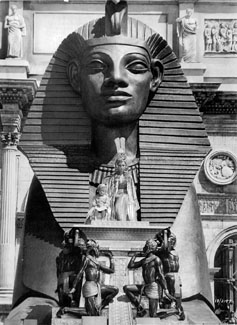Product Description
Paul-Auguste Gagné, French Egyptian Revival Gilt Bronze Garniture Set c. 1875


Paul-Auguste Gagné (Sculptor) France
Egyptian Revival garniture set, circa 1875
Gilt bronze and carved rouge marble mantle clock and candelabra in a high Egyptian Revival style
Marks: P.A. Gagne (elaborate incised scroll signature on the back of the portrait bust)
For more information on Gagné see: Dictionnaire des peintres, sculpteurs, dessinateurs et graveurs, vol. 4, E. Bénézit (Paris: Librairie Gründ, 1976) p. 579.
For other related Egyptian Revival garniture sets see: Egyptomania: Egypt in Western Art, 1730-1930 (Paris: Éditions de la Réunion des Musées Nationaux and Ottawa: National Gallery of Canada, 1994)
H: 20 3/4″ x D: 6 3/4″ x W: 14 1/2″
Paul-Auguste Gagné, French Egyptian Revival Gilt Bronze Garniture Set c. 1875
CARL F. CARLMAN (1855-1955) Sweden
Set of four covered silver boxes c. 1930
Hand wrought and hand hammered silver with a wood lined interior, square shaped finial
Marks: Triple Star with S (Swedish silver mark), G8, JJS (in a rectangle), oval cartouche, CARLMAN
H: 1″ x W: 2 1/2″ x D: 2 1/2″ (each box)
Carl F. Carlman was a silversmith to the Swedish Royal Family.
